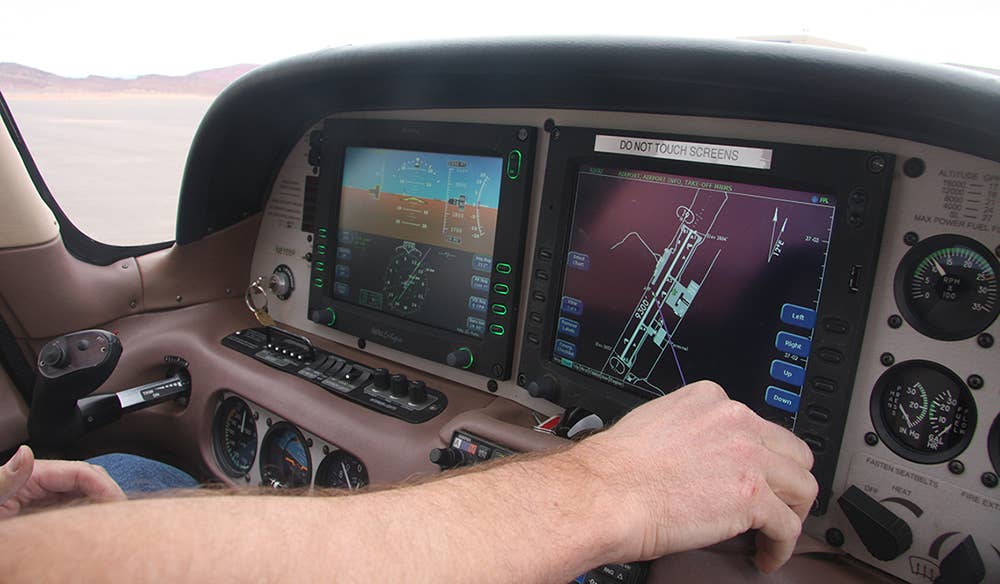
For safety’s sake, set all frequencies, flight-plan info and moving map screens while the aircraft is stopped so there is no temptation to fiddle with avionics while taxiing. Kim Rosenlof
Unless you’ve been living in a cave, you’ve likely seen some type of anti-texting-while-driving campaign, even where it has not yet been outlawed. While it’s obvious that taking your eyes off the road while driving can lead to collisions, it’s also human nature to multitask — tune the radio, drink coffee or read that “urgent” text message. After all, you’re just taking your eyes off the road for a split second, right? However, that split second can turn into two, three, five seconds, and suddenly you’ve driven several blocks with your eyes elsewhere and bam!
According to the National Highway Traffic Safety Administration, distracted driving killed 3,450 people in 2016 and contributed to more than 391,000 injuries in 2015. And though the numbers are lower, a distracted taxiing accident can be just as costly or even deadly.
In a 2015 study by the Mitre Corp. analyzing 1,782 records from the FAA Runway Safety database, within the subset of incidents involving aircraft taxiing for departure, 40 percent of pilots reported “distraction in the cockpit at the time of the incident.” An earlier FAA study of wrong runway departures reported that out of 80 incidents where the aircrew were cleared to one runway but departed from or taxied onto a different runway, nine listed distraction as a factor. For those actually killed during a runway incursion, we’ll never know whether distraction was a factor.
The lesson here is clear: The time you spend taxiing the airplane should involve only that task. Others can wait until you’re safely stopped in the run-up area or at the runway hold-short line. From setting frequencies and flight plans to completing preflight checklists and talking to passengers, pilots have multiple opportunities for distractions while taxiing. When pilots are new and must concentrate on using their feet to steer, they tend to focus on the process of taxiing. But as pilots gain more experience, they begin to feel more comfortable multitasking during taxi operations, even to the point of performing “rolling run-ups.”
For single-pilot operations, multitasking while taxiing can be as dangerous as texting while driving. The risk of striking other airplanes or objects, missing taxi instructions, running off a taxiway and crossing active runways increases dramatically every second the pilot’s head is down in the cockpit. Multitasking for dual-pilot operations can be risky if the pilot responsible for taxiing begins assisting with the preflight or rolling run-up procedures.
Bottom line: Take the extra minutes to set up your frequencies, tablet EFB or FMS prior to taxiing, do your run-up at a stop, put the cellphone away and concentrate only on taxiing. To paraphrase an anti-texting-while-driving slogan: Multitasking and taxiing — there are stupider things, but it’s a very short list.

Sign-up for newsletters & special offers!
Get the latest FLYING stories & special offers delivered directly to your inbox






